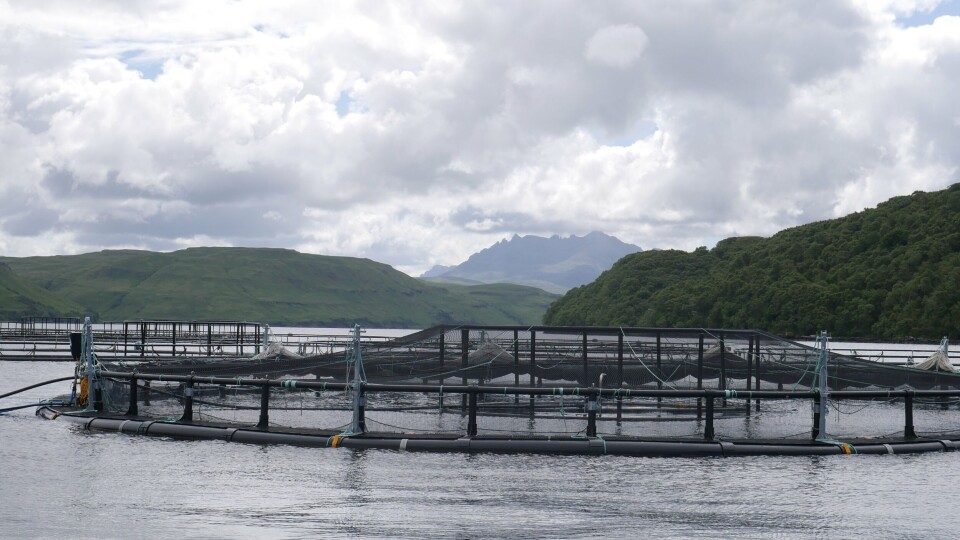
Marine Harvest has strong Q2 but cuts harvest guidance
Marine Harvest has reduced its harvest guidance for 2018 by 20,000 tonnes (5%) globally because of biological issues in Norway, Scotland and Canada.
The world’s biggest salmon farmer announced the revised guidance in its report for the second quarter of 2018, in which it reported a Q2 operational EBIT of €175 million, a drop of €23m compared to the corresponding quarter of 2017 when the company was enjoying record results.
Operational revenues were €888m (€884m Q2 2017) and the total harvest volume was 78,346 tonnes (78,612 Q2 2017).
Seasonal record
Salmon of Norwegian origin achieved an operational EBIT per kilo of €2.56 (€2.50 Q2 2017) in the second quarter – a seasonal record high - while salmon of Scottish and Canadian origin reported operational EBIT per kilo of €2.38 and €0.98 respectively (€3.10 and €2.34). Salmon of Chilean origin reported operational EBIT per kilo of €1.86 in the quarter (€1.46).
Harvest in Scotland was 8,958 tonnes, less than half the 18,515 tonnes harvested in the second quarter of 2017. Marine Harvest said this is due to lower opening biomass as a consequence of timing of smolt stockings and lower performance on the fish harvested in 2018.

In its Q2 2018 report, Marine Harvest said cost per kg in Scotland was reduced in the second quarter compared to the first quarter, however, compared to the second quarter in 2017 costs increased. The cost increase was due to negative scale effects from lower volumes and harvesting from lower performing sites than in the comparable quarter.
Biological costs up 33%
Biological costs per kg in Scotland increased by 33% in the second quarter of 2018 compared to the corresponding quarter of 2017, mainly due to increased feed and health costs and negative scale effects.
No incident-based mortality was recognised in Q2 (€1.5m Q2 2017).
Sea lice levels at the end of the quarter were lower than at the end of the comparable quarter of 2017.
In Canada, operational EBIT was €7.8m, little more than a third of the €21.9m made in Q2 2017, due to increased costs and lower volumes and achieved prices.
The cost level in the second quarter of 2018 was higher than in Q2 2017 due to high mortality and reduced growth. The biological costs per kg salmon harvested in the quarter increased by 16% compared to Q2 2017.
Gill issues
Incident-based mortality of €1.9m was recognised in the second quarter due to gill issues, and operational EBIT was also negatively impacted by €400,000 related to the build-up and preparation phase for operations in Atlantic Canada.
Production was lower than in Q2 2017 as a result of high mortality and reduced feed intake, both related to gill damage caused by environmental circumstances, as well as a lower opening biomass.
Marine Harvest’s Irish operation achieved 10% more for its fish than in Q2 2017 as a result of string demand for organic salmon, although operational EBIT fell from €12.2m in Q2 2017 to €2.7m due to lower volumes.
Harvesting slowed
Harvest volume was 1,239 tonnes gutted weight in the second quarter (3,634 tonnes Q2 2017). Harvesting was slowed down to improve harvest weights.
The company harvested 778 tonnes in the Faroes, where operational EBIT was €2.3m. Marine Harvest said the majority of the salmon had been sold to customers in Eastern Europe at favourable prices, although prices were somewhat impacted by relatively low harvest weights.
“The global demand for salmon has been very good so far this year,” said Marine Harvest chief executive Alf-Helge Aarskog. “This has led to high prices in all markets in the second quarter. The result has also been impacted by strong performances by our business units in Norway and Chile, which both had their best second quarter ever.”






















































